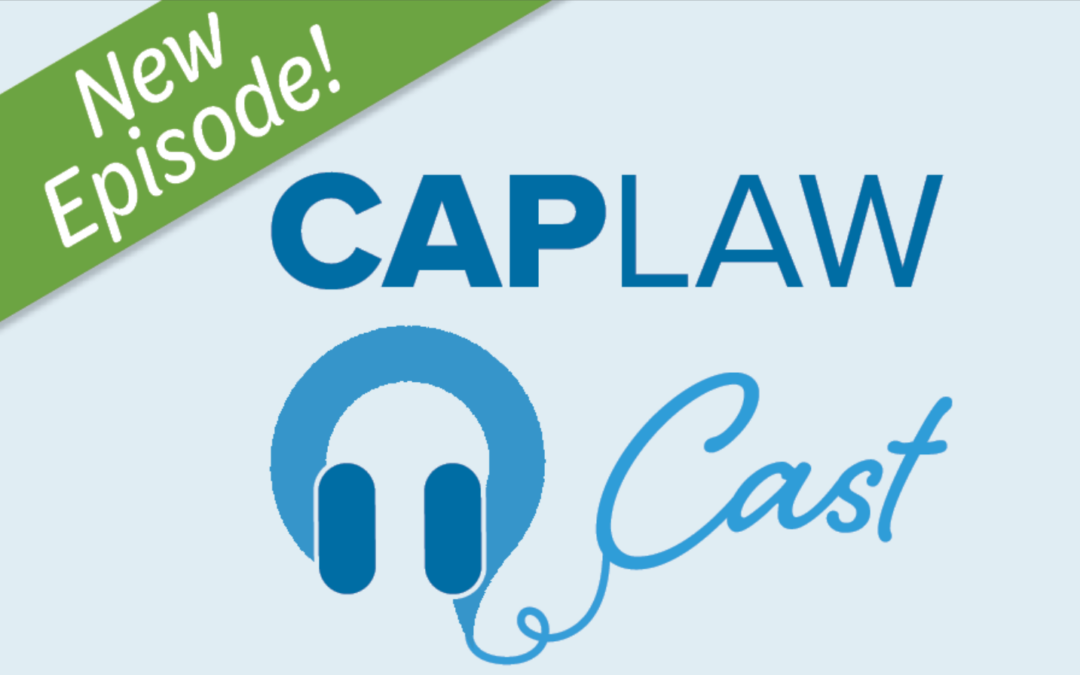Resource Library
All of CAPLAW’s resources and publications are now available in CAPLAW’s new Resource Library. Use the search filters below to find the resource you need.
Featured Resources

Bylaws Toolkit
This updated Bylaws Toolkit will help CAAs develop bylaws that are clear, effective, and up-to-date. The toolkit outlines key concepts for an agency’s bylaws, such as the authority of the Board of...

Dynamic Duos Podcast
Mutual respect and trust between leaders at a Community Action Agency (CAA) is essential to the stability of the organization. Without a strong relationship between a CAA board chair and executive...

Tips on Preparing for a Possible Government Shutdown
With the possibility of a federal government shutdown looming, what should CAAs be doing to prepare? Review 10 tips to consider when preparing for a possible shutdown. Summaries of federal agency...

Ins and Outs of Retirement Plan Audits
In the first webinar of the Keeping Your Organization's Retirement Plan in Shape webinar series, learn from an experienced retirement plan auditor about which retirement plans are required to have audits, what auditors look at when conducting an audit, how to prepare for the efficient completion...

Case Study: Pace CAA’s Social Enterprises
How did a nonprofit Community Action Agency come to operate for-profit businesses? This case study examines how a nonprofit CAA leveraged its experience to establish social enterprises focused on helping individuals reach self-sufficiency, offering lessons in the common legal, governance, and...

The Power of a Public CAA Tripartite Board
This case study focuses on how the tripartite board of a public Community Action Agency (CAA) fulfills its responsibilities with respect to the Community Services Block Grant (CSBG) Organizational Standards (Standards) set forth in the federal Office of Community Services’ (OCS) Information...

Working with Attorneys
An attorney plays a key role in helping a CAA maintain accountability and avoid liability. By proactively working with an attorney to ensure that its organizational infrastructure is legally compliant and enforceable, a CAA may avoid costly litigation and the negative press and low employee morale...

Tips for Attorneys Reviewing CAA Bylaws
In this webinar, we examine the main issues for an attorney to consider when asked by a CAA to review and update its bylaws. We discuss laws specifically applicable to a CAA’s bylaws, such as the CSBG and Head Start board composition requirements, and what provisions the bylaws should contain to...

Taking Care of Business…and Working Overtime
The U.S. Department of Labor recently issued its long-anticipated “overtime rule,” which affects whether certain employees may be treated as exempt from the minimum wage and overtime pay requirements of the federal Fair Labor Standards Act. The DOL estimates that the new overtime rule, which will...

Applying the ACA to Short-Term Employees
With summer approaching and the Affordable Care Act (ACA) in full swing, CAAs may be faced with questions about how the ACA applies to summer or other temporary workers. This set of Frequently Asked Questions addresses the applicability of the ACA to employees who are not traditional year-round...

Working with CAA Personnel Policies
This webinar is intended to help attorneys better understand the legal issues unique to CAAs with respect to their personnel policies and practices. We discuss the human resources directives in the CSBG Organizational Standards and the new overtime rule recently released by the Department of...

Tax-Exempt Law for Nonprofit CAAs
A nonprofit CAA’s federal tax-exempt status is one of its most valuable assets. In this webinar we review the do’s and don’ts of protecting that status. Topics covered include advantages and basic requirements of tax exemption under Internal Revenue Code section 501(c)(3); restrictions and...
